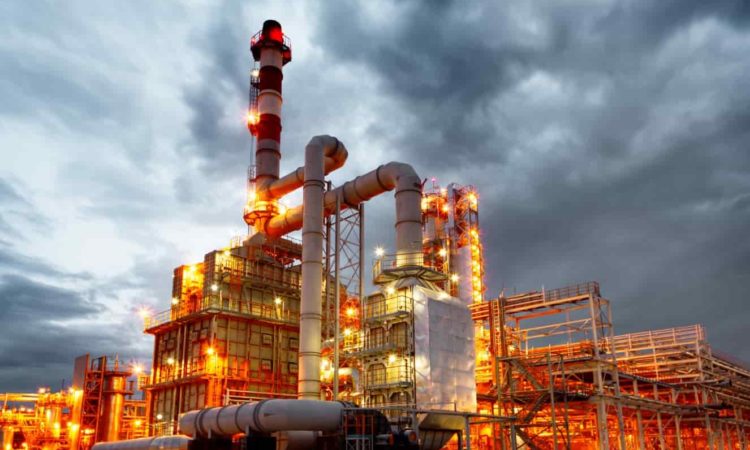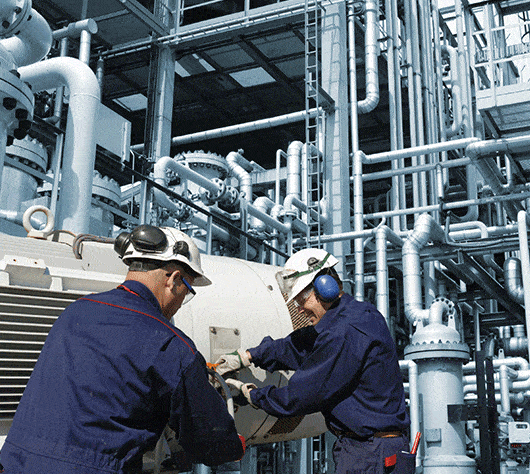Roar Solutions for Dummies
Roar Solutions for Dummies
Blog Article
Examine This Report on Roar Solutions
Table of ContentsRoar Solutions Things To Know Before You BuyOur Roar Solutions IdeasNot known Facts About Roar Solutions
In order to protect installments from a prospective surge a technique of analysing and classifying a potentially harmful area is required. The purpose of this is to make sure the appropriate selection and installation of tools to eventually prevent an explosion and to make certain safety and security of life.
(https://trello.com/w/roarsolutions/members)
No devices must be installed where the surface area temperature of the devices is higher than the ignition temperature of the offered danger. Below are some typical dust harmful and their minimal ignition temperature level. Coal Dirt 380C 225C Polythene 420C (thaws) Methyl Cellulose 420C 320C Starch 460C 435C Flour 490C 340C Sugar 490C 460C Grain Dust 510C 300C Phenolic Resin 530C > 450C Aluminium 590C > 450C PVC 700C > 450C Soot 810C 570C The likelihood of the danger being present in a focus high adequate to cause an ignition will certainly vary from location to area.
In order to classify this risk an installment is separated right into locations of danger depending upon the amount of time the dangerous exists. These areas are referred to as Zones. For gases and vapours and dusts and fibres there are 3 zones. Zone 0 Area 20 An unsafe environment is highly most likely to be existing and might exist for long durations of time (> 1000 hours annually) or even continually Zone 1 Area 21 A dangerous environment is possible but unlikely to be present for lengthy periods of time (> 10 450 C [842 F] A category of T6 indicates the minimal ignition temperature level is > 85 C [185 F] Dangerous location electrical equipment possibly made for usage in higher ambient temperature levels. This would certainly suggested on the ranking plate e.g. EExe II C T3 Ta + 60C( This suggests at 60C ambient T3 will not be exceeded) T1 T1, T2, T3, T4, T5, T6 T2 T2, T3, T4, T5, T6 T3 T3, T4, T5, T6 T4 T4, T5, T6 T5 T5, T6 T6 T6 A T Class score of T1 means the optimum surface temperature level produced by the instrument at 40 C is 450 C. Presuming the associated T Course and Temperature rating for the tools are proper for the area, you can always utilize an instrument with a more rigorous Department rating than needed for the area. There isn't a clear solution to this question unfortunately. It actually does depend upon the type of devices and what repair work require to be executed. Tools with details examination treatments that can not be done in the field in order to achieve/maintain 3rd event ranking. Must return to the manufacturing facility if it is before the tools's service. Field Repair Service By Authorised Personnel: Challenging screening may not be required nevertheless details procedures might need to be adhered to in order for the tools to maintain its 3rd party ranking. Authorised personnel should be utilized to carry out the job appropriately Fixing have to be a like for like replacement. New element have to be thought about as a straight replacement needing no unique testing of the tools after the repair is full. Each tool with a harmful score should be reviewed individually. These are detailed at a high level below, however, for more comprehensive information, please refer straight to the guidelines.
Unknown Facts About Roar Solutions
The equipment register is an extensive data source of devices documents that includes a minimum set of fields to recognize each item's area, technological specifications, Ex-spouse category, age, and ecological data. This info is important for monitoring and handling the devices properly within harmful locations. On the other hand, for periodic or RBI sampling examinations, the grade will be a combination of Detailed and Close evaluations. The proportion of Comprehensive to Shut examinations will be established by the Equipment Danger, which is assessed based upon ignition danger (the probability of a source of ignition versus the probability of a flammable ambience )and the harmful location classification
( Area 0, 1, or 2). This variation will certainly likewise affect the resourcing needs for job preparation. When Great deals are specified, you can establish sampling plans based upon the sample size of each Whole lot, which describes the variety of arbitrary equipment things to be checked. To figure out the required sample size, two aspects require to be reviewed: the size of the Great deal and the group of assessment, which suggests the degree of initiative that should be used( lowered, normal, or raised )to the assessment of the Great deal. By combining the category of inspection with the Great deal size, you can then develop the proper denial requirements for a sample, meaning the allowable number of malfunctioning things found within that sample. For more details on this procedure, please refer to the Energy Institute Standards. The IEC 60079 standard advises that the maximum period in between examinations need to not go beyond three years. EEHA examinations will certainly also be performed beyond RBI campaigns as component of scheduled maintenance and equipment overhauls or repair work. These examinations can be credited toward the RBI example sizes within the influenced Whole lots. EEHA inspections are carried out to recognize mistakes in electric tools. A weighted scoring system is vital, as a solitary item of devices may have multiple faults, each with varying degrees of ignition risk. If the combined rating of both examinations is much less than twice the mistake score, the Lot is considered appropriate. If the Great deal is still taken into consideration undesirable, it needs to undergo a full evaluation or reason, which may activate stricter assessment methods. Accepted Whole lot: The reasons of any kind of faults are identified. If a typical failure mode is discovered, extra tools may call for examination and repair work. Mistakes are identified by extent( Security, Integrity, House cleaning ), ensuring that urgent concerns are evaluated and attended to quickly to minimize any impact on security or operations. The EEHA database ought to track and videotape the lifecycle of mistakes together with the rehabilitative activities taken. Executing a durable Risk-Based Assessment( RBI )strategy is vital for ensuring conformity and safety in handling Electrical Tools in Hazardous Areas( EEHA) (Roar Training Solutions). Automated Mistake Rating and Lifecycle Administration: Easily take care of mistakes and track their lifecycle to boost examination precision. The intro of this support for risk-based look at these guys examination better reinforces Inspectivity's position as a best-in-class remedy for governing conformity, along with for any asset-centric examination use instance. If you are interested in finding out more, we invite you to ask for a presentation and discover exactly how our option can change your EEHA management processes.
Some Known Facts About Roar Solutions.

In regards to explosive risk, a harmful location is a setting in which an explosive environment exists (or may be expected to be present) in amounts that need special precautions for the building, installment and usage of equipment. Roar Solutions. In this short article we check out the difficulties encountered in the workplace, the danger control procedures, and the required proficiencies to function safely
These materials can, in particular conditions, create eruptive atmospheres and these can have significant and awful effects. Many of us are familiar with the fire triangle get rid of any one of the three components and the fire can not occur, but what does this mean in the context of unsafe areas?
In the majority of circumstances, we can do little concerning the degrees of oxygen in the air, but we can have significant impact on resources of ignition, for instance electrical tools. Hazardous areas are recorded on the unsafe area classification illustration and are identified on-site by the triangular "EX" indication. Right here, amongst other key information, zones are divided right into 3 types depending upon the hazard, the chance and period that an eruptive ambience will certainly exist; Zone 0 or 20 is deemed the most dangerous and Area 2 or 22 is deemed the least.
Report this page